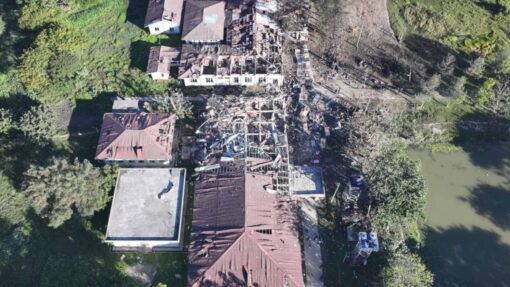Research: Lack of tornado awareness a community safety issue

A James Cook University (JCU) study has found some Australians don’t believe tornadoes happen here, sparking calls for more education about these severe weather events.
Tornadoes are narrow, rotating columns of air extending from a thunderstorm to the ground and can be the most violent of all atmospheric storms.
They’re common in the central United States, where about 1200 tornadoes form each year.
But they do occur outside the USA. JCU’s Centre for Disaster Studies research supervisor, Yetta Gurtner, said about 60 tornadoes occur in Australia each year.
“There are eyewitness accounts of tornadic activity dating back to 1795, but the documented evidence of tornadoes in Australia has been sporadic and inconsistent.
“Part of the reason for this is because tornadoes predominantly occur in sparsely populated locations.
“An initial review suggested there was limited community awareness and understanding of tornadoes in Australia.
“So PhD candidate Vicki MacLean put together a research project to gauge levels of existing knowledge and capacity from a disaster management perspective.
“Almost five per cent of survey respondents believed tornadoes did not occur in Australia at all.”
Dr Gurtner said there appeared to be confusion about the difference between a cyclone, a hurricane, and a tornado.
“While most people were familiar with tornadoes, there is significant variability in the terminology used in Australia.
“Frequently used alternative terms such as willy-willy, dust devil, and mini tornado can distort community perceptions regarding the size and destructive capacity of an event.
“17 per cent of respondents did not know where to source relevant information on weather hazards of any kind, or how to prepare for an event.”
Dr Gurtner said the research project will now investigate the perspectives of weather forecasters and emergency service personnel to developing improved integrated risk management approaches for tornadoes.
The Bureau of Meteorology says Australia has no defined tornado season, but they’re more common in late spring and early summer.
Winter tornadoes are relatively regular visitors to southern coastlines and can form in the outer bands of thunderstorms associated with tropical cyclones.
Wind speed in a tornado is measured on the Fujita scale, with the least severe category, F1, reaching speeds up to 180 kilometres per hour.
Theoretically, the most powerful tornado is an F5, which can generate wind speeds above 400 kilometres per hour.
Australia has never had an official F5 tornado, but events in Bulahdelah (NSW) in 1970 and Beenleigh, near Brisbane, in 1920 may have been close.
In March 2012, Townsville was hit by what was called a “mini tornado” that carved a path of damage about 500 metres wide and two kilometres long.
It touched down near the Townsville Airport, with winds up to 110 kilometres per hour and driving rain.
More than 100 houses were damaged in the suburbs of Vincent, Pimlico, Gulliver, Garbutt, and Aitkenvale.



